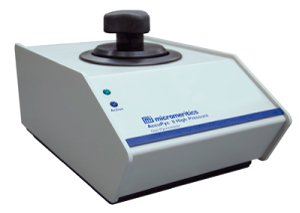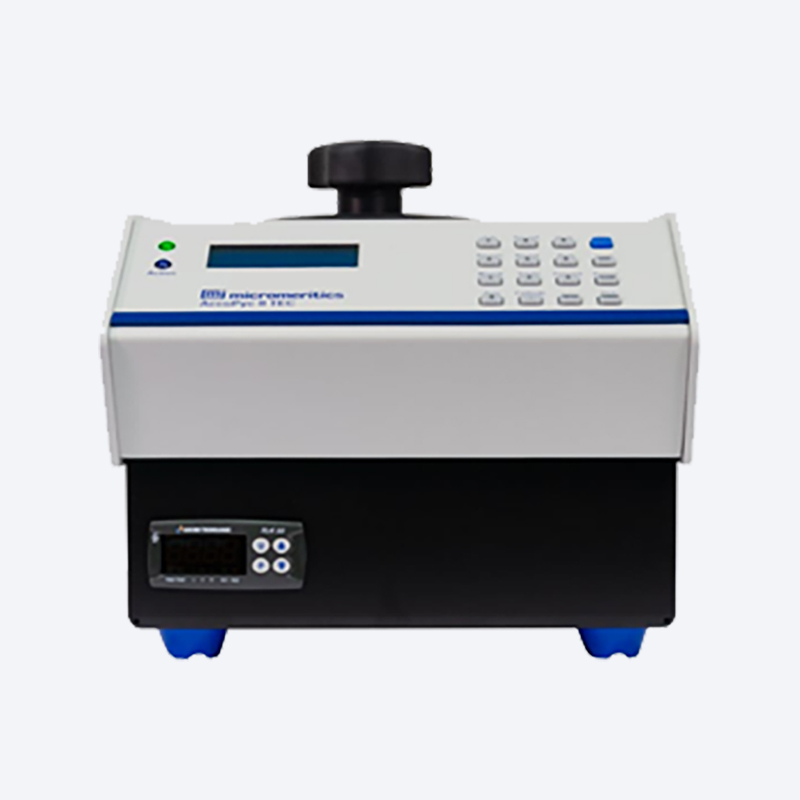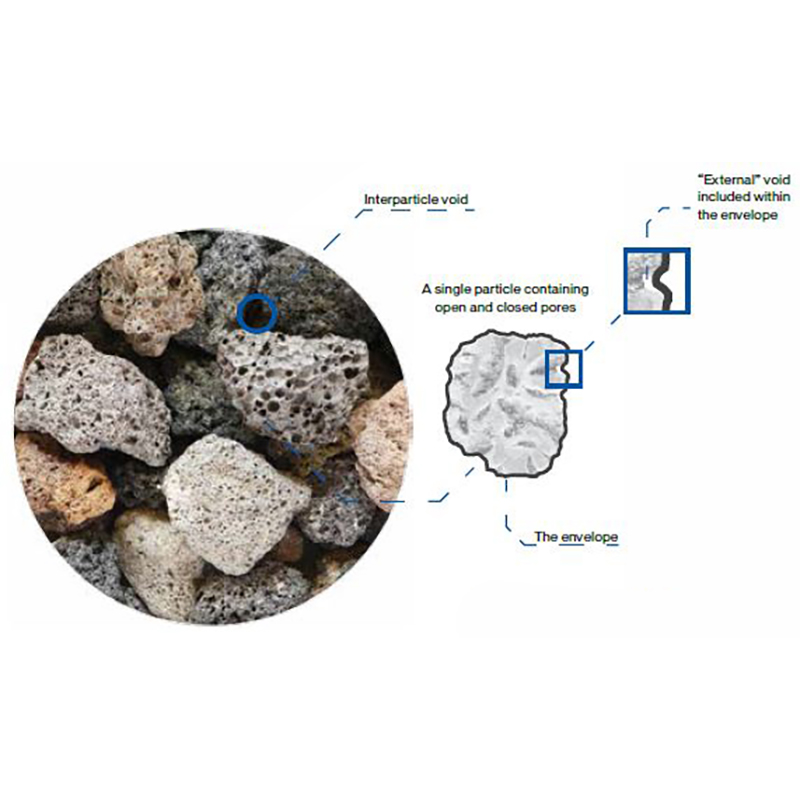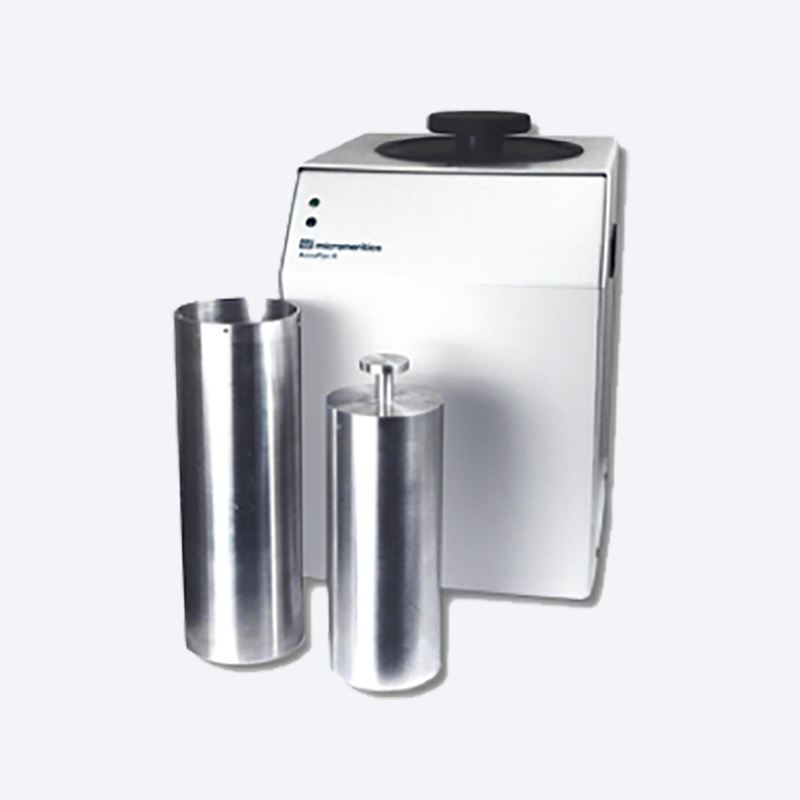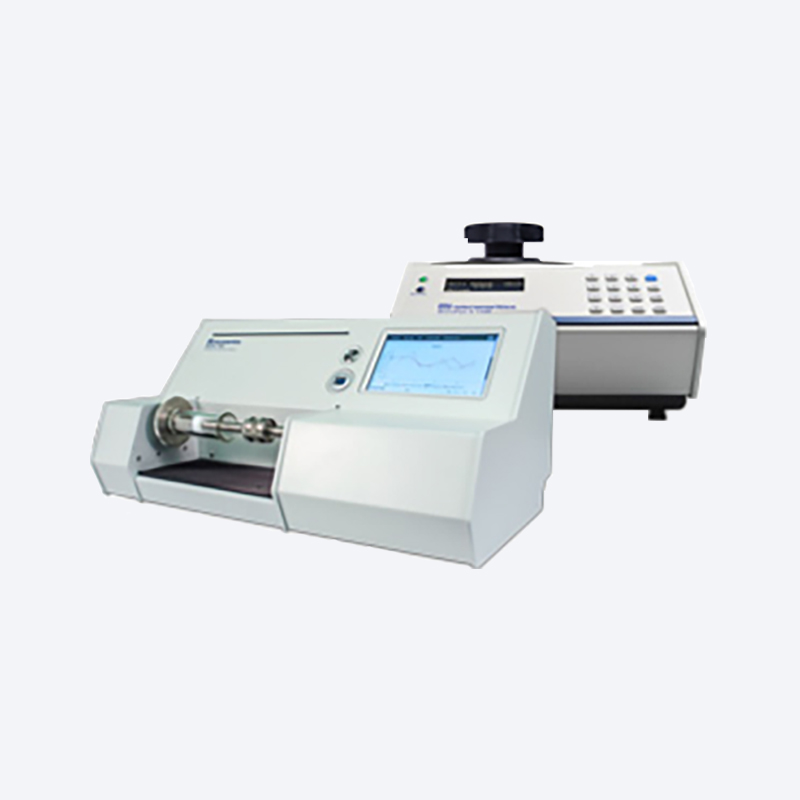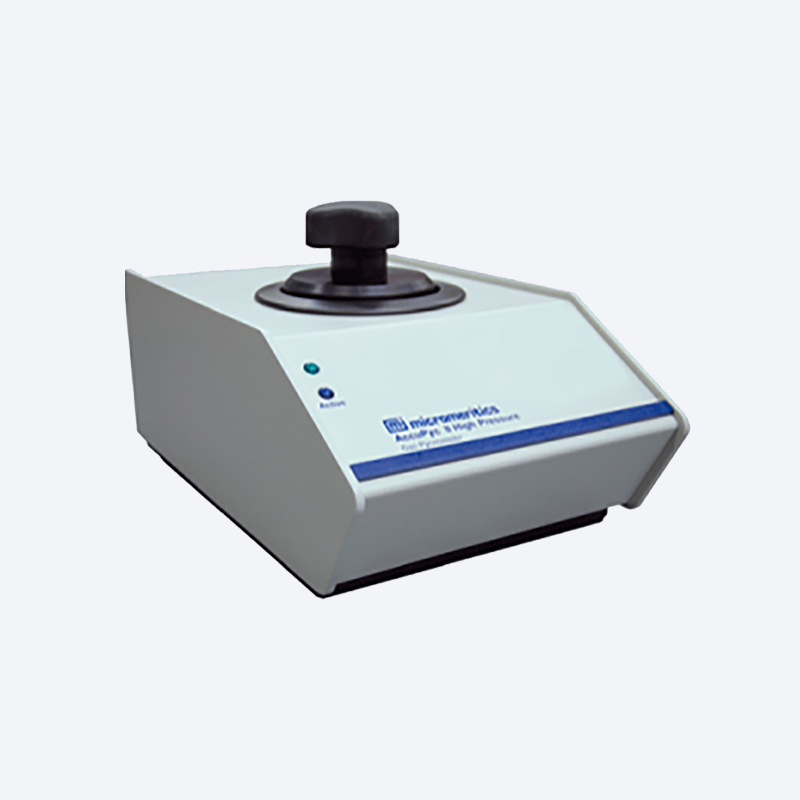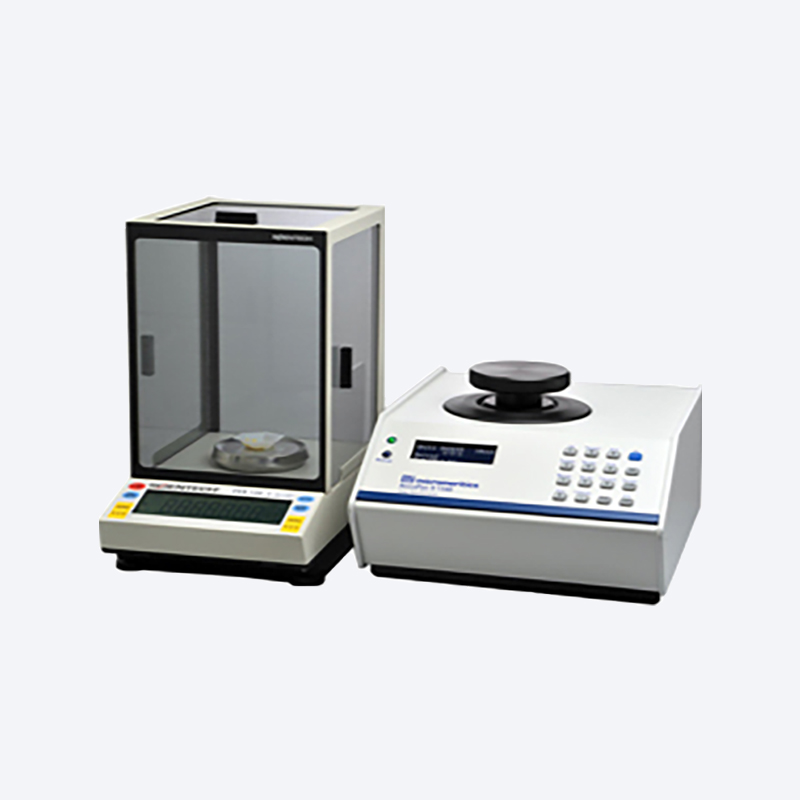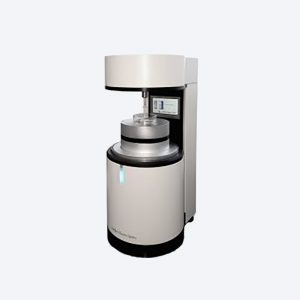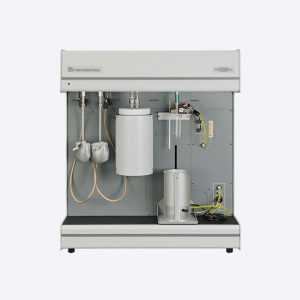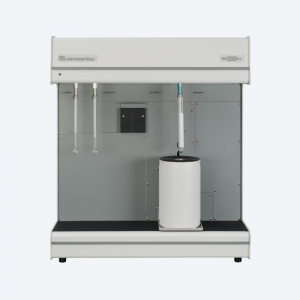Description
The AccuPyc II 1345 Series Pycnometers are fast, fully automatic pycnometers that provide high-speed, high-precision volume measurements and true density calculations on a wide variety of powders, solids, and slurries. After analyses are started with a few keystrokes, data are collected, calculations are performed, and results displayed. A minimal amount of operator attention is required.
- Maintain product integrity with this non-destructive test
- Eliminate error with programmable automatic repeat and data acquisition set to your tolerances to comply with your SOPs
- Ability to use a variety of gases
- Maximize your investment-Adaptive configuration to meet your sample size needs
- Low-cost, minimal maintenance, and small footprint
- Increase efficiency and compliance with barcoding compatibility
- Speed of analysis, accuracy, repeatability, and reproducibility
- Versatility of keypad or Windows software operation
- Eliminate procedural steps with direct input from an analytical balance
Principle of Operation
This technique uses the gas displacement method to measure volume accurately. Inert gases, such as helium or nitrogen, are used as the displacement medium. The sample is sealed in the instrument compartment of known volume,the appropriate inert gas is admitted, and then expanded into another precision internal volume.
The pressures observed upon filling the sample chamber and then discharging it into a second empty chamber allow computation of the sample solid phase volume. Helium molecules rapidly fill pores as small as one angstrom in diameter; only the solid phase of the sample displaces the gas. Dividing this volume into the sample weight gives the gas displacement density.
Total Density
On an elementary level, the volume of a solid material can be calculated by measuring its length, width, and thickness. However, many materials have within their structure surface irregularities, small fractures, fissures, and pores.
Some of these voids or pores are open to the surface or closed within the structure of the solid material. Therefore, differences in the material volume depend on the measurement technique, measurement method, and the conditions under which the measurements were performed.
| Density Type | Definition | Material Volume | Open-PoreVolume | Closed-PoreVolume | Inter particle Volume | External Void Volume | Addressed by |
|---|---|---|---|---|---|---|---|
| True (Absolute) | The mass of a substance divided by its volume, excluding open and closed (or blind) pores | ✔ | AccuPyc II | ||||
| Skeletal(Apparent) | The ratio of the mass of the solid material to the sum of the volume including closed (or blind) pores | ✔ | ✔ | AccuPyc II | |||
| Envelope | The ratio of the mass of a substance to the envelope volume (imaginary boundary surrounding the particle) | ✔ | ✔ | ✔ | ✔ | ✔ | GeoPyc |
| Bulk | Mass of the material divided by the volume occupied that includes interstitial space | ✔ | ✔ | ✔ | ✔ | GeoPyc | |
| TAP | Apparent powder density obtained under stated conditions of tapping | ✔ | ✔ | ✔ | ✔ | GeoPyc with T.A.P. function |
- AccuPyc II TEC
- Accupyc II – FoamPyc Option
- CorePyc
- Analytical Balance Bundle
- Accupyc II – Roller Compaction
- AccuPyc II – High Pressure Density Measurement
Intergrated Thermo-Electric Temperature Control Solution
Materials tend to expand as they are heated, causing the same mass to occupy an increasing volume, thus lowering the substances density. Materials subjected to changing temperature may have a direct effect on volume, affecting accurate density determination.
The AccuPyc II TEC features a Peltier thermoelectric device for precise temperature control and stability. This instrument is an excellent option for use with temperature sensitive or viscous samples where environmental temperature cannot be adequately controlled.
Accurate temperature control from
15 – 36 °C (+/- 0.1 °C), adjustable in
0.1 °C increments
Available in 10-cm3 and 100-cm3 AccuPyc II TEC models. Also available in an analysis module version for remote operation when utilizing the AccuPyc II control modul. AccuPyc II TEC Software Density Determination of Semi-Solid Bituminous Materials
This AccuPyc solution can be closely correlated (< 0.15% difference) to results obtained with ASTM Test Method D70-09.
The ASTM method is burdensome and time consuming. Our approach offers an expedited, more robust, operator-independent method, with results in minutes.
Reproducible results in minutes, virtually eliminates operator error. Integral solution with software for bituminous material testing includes results for specific gravity, volume, and density
Peltier thermoelectric control (10 to 60 °C) provides excellent temperature control/stability and sample handling. Disposable sample cups limit cross-contamination and minimize cleaning of sample chamber between analyses.
| Asphalt Sample | Average Density AccuPyc II TEC Solution (n=11) (g/cc) | %Relative Standard Deviation (n=11) | ASTM Method D70-9 Density (g/cc) | %Difference Between Methods |
|---|---|---|---|---|
| Sample A | 1.01906 | 0.03 | 1.01758 | 0.1453 |
| Sample B | 1.02543 | 0.03 | 1.02536 | 0.0067 |
| Sample C | 1.01821 | 0.07 | 1.01848 | 0.0263 |
| Sample D | 1.02563 | 0.09 | 1.02576 | 0.0125 |
Density Measurements for Open- and Closed Cell Foams
The AccuPyc II unit can be ordered initially with the FoamPyc application installed. If you have a standard AccuPyc, you can upgrade with a software enhancement. A FoamPyc option for measuring open- and closed-cell foam materials is available in the following configurations for the standard and temperature- controlled pycnometers:
10-cm³ nominal cell volume (for conformance to ASTM and ISO methods)
100-cm³ nominal cell volume
FoamPyc Technique Determines Open Cell Volume in Foamed Materials
The FoamPyc option for the AccuPyc 1345 Density Analyzer lets you measure, calculate, and report the percentage of open cell volume in blocks of foamed or cellular plastic, glass, rubber, or metal.
These foamed materials have thin membranes or walls that separate internal cavities or cells. These cells can be open or interconnecting, closed or non-connecting, or a combination of open and closed. With the FoamPyc software, you can determine the percentage of sample volume occupied by open cells, as well as closed cells.
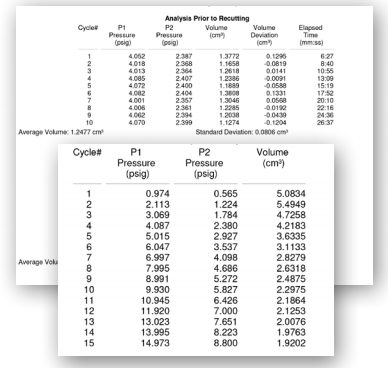
A Focus on Accuracy
The FoamPyc program ensures accuracy by correcting for punctured cells caused by cutting the block of material to obtain a sample. The volume of the cells that were opened on the cut surfaces of the sample are computed and their volume deducted from the analysis results so as not to overstate the true open-cell volume of the original uncut material.
The program uses correction calculations that follow ASTM Standard D 6226. Correction using cell dimensions method factors in cell chord length for estimating cut cell volume. Correction by re-cutting sample method, performs a second analysis to correct for opened cells, except this time the same sample is subdivided (re-cut) to expose twice the total surface area as before. Then, the second run is subtracted from the first run using a correction calculation, V= 2(V + D) – (V + 2D), where V is the true open-cell volume and D is the cut cell volume.
No correction method performs an AccuPyc analysis on the cut sample as is, which works well with samples that have mostly Compressibility method permits the volume change of soft, closed cell foams to be measured by applying progressively larger amounts of isotropic gas pressure and computing the volume occupied by the foam. Cell fracture method, evaluates the possibility of fracturing, which may occur when closed cell foam made of brittle material (having large, thin-walled cells) is exposed to pressure. This method applies first a small, controlled amount of pressure, and then performs a volume measurement. Next, a larger amount of pressure is applied. The sample is then returned to the first pressure and volume measurement is repeated.
Micromeritics announces the availability of a FoamPyc Sample Preparation Kit, Part No. 133/33009/00, to enhance your assessment of open pores in plastic foams. ASTM Test Method D-6226 describes the technique for extracting a sample of foam of specific dimensions then re-cutting it to double the amount of exposed surface, thereby deriving a correction for the pores opened in the initial cutting. The kit contains a knife, extra blades and a guide structure for both the first cutting of sample to dimensions and the re-cutting.
CorePyc-Density of Intact Core Samples
With a large-volume sample chamber, this pycnometer has been designed to address the specific needs of operations that require pore volume knowledge of intact drilling cores. This instrument improves sampling statistics by eliminating the need to break a core into many smaller pieces and run multiple analyses to obtain volume results. The CorePyc eliminates the need to run multiple analyses on large cores
Large sample chamber with a volume of approximately 2000 cm3
Sample chamber can accommodate a 95-mm (3.74 in.) diameter core of up to 278 mm (10.9 inches) in length
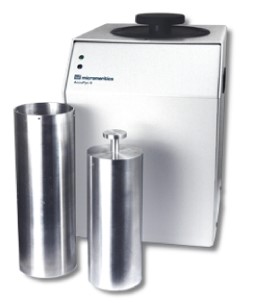
Analytical Balance Bundle
The AccuPyc weighing solution bundle provides one-touch transfer of mass data from the analytical balance directly to the AccuPyc’s Windows software. Direct transfer eliminates user error associated with manual entry of mass data. Optional Peltier temperature control eliminates environmental temperature variation and facilitates the handling of “hot” samples.
- Seamless device compatibility
- One-touch mass data transfer to AccuPyc for automatic calculation of density
- Includes 120 X 0.1 mg electronic analytical balance with calibration weight
- Optional Peltier thermoelectric control (10 to 60 °C) provides ambient temperature stability

Pharmaceutical Ribbons
With the skeletal density measured by the AccuPyc included in the setup parameters for the envelope density, the GeoPyc will calculate and report the percent porosity and total pore volume of the ribbon. This information has proven to be useful in controlling the mechanical properties of the material, compression force settings on the roller compactor, and subsequent tablet press settings.
Tablet Press
Pharmaceutical scientists realize that many of the physical, mechanical, and pharmacokinetics properties of tablets are influenced by the basic settings of a tablet press. Using the AccuPyc coupled with the GeoPyc, scientists are now able to determine quickly and easily the skeletal density, envelope density, total pore volume, percent porosity, and closed-cell pore volume of tablets produced with varying press settings.
Solid Fraction Data for Roller Compaction
Solid Fraction is a control parameter used in roller compaction operations. This control parameter assists in determining the optimal setting for speed, compression and nip angle in the roller compactor. Using the Solid Fraction as part of your SOP will ensure consistent product batch to batch, along with the end product having the designed and desired performance.
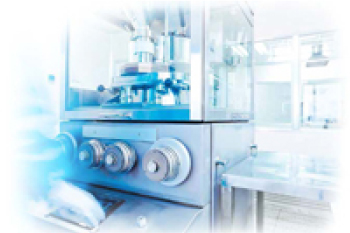
AccuPyc/GeoPyc Porosity Bundle
While skeletal and envelope volume measurements are significant in their importance as individual capacities, their combination permits the pharmaceutical scientist to also accurately calculate percent porosity and total pore volume. With this data a process engineer or quality assurance scientist can have greater knowledge of their process for improvement in both quality of product and optimization of the manufacturing process.
GeoPyc 1365 Envelope Density Analyzer
The GeoPyc utilizes a quasi-fluid displacement medium composed of non-hazardous microspheres having a high degree of flowability that do not wet the sample or fill its pores.
Determines envelope volume and density of monolithic samples as well as bulk volume and density of powdered materials. A variety of sample chambers is available to accommodate a wide range of sample sizes
- AccuPyc II 1345 and the GeoPyc 1365 bundle
- AccuPyc II 1345 Gas Pycnometer
The AccuPyc II 1345 Series Pycnometers are fast, fully automatic pycnometers that provide high-speed, high-precision volume measurements and true density calculations. The instrument completes most sample analyses in less than three minutes without sacrificing accuracy or compromising sample integrity.
- Non-destructives test with speed of analysis
- Eliminate errors with programmable auto repeat and data acquisition to a selected SOP
- Adaptable configuration to accommodate samples of varying volumes

The AccuPyc II HP 1345 – High Pressure Density Measurement
The AccuPyc HP features a 100 cm3 sample capacity to determine the true volume and density of solids and powders at high pressures up to 500 psi. The bundle includes both a Control and Analysis Module and can be operated in either a stand-alone configuration using the internal keypad on the control module, or controlled with a desktop computer. The Control module is cable connected to the analysis module permitting remote analysis if desired.
Precision:
Reproducibility within +/- 0.04% nominal, full-scale cell chamber volume.
Accuracy:
To within 0.1% of reading, plus 0.1% of sample capacity
Additional Features Include:
- Two separate modules, one for control with keypad the other for analysis. Modules are connected via provided cabling. The AccuPyc II HP 1345 High Pressure Density Measurement
- Sample chamber can accommodate samples up to 48mm in diameter and up to 60mm in length
- Guaranteed reproducibility to within 0.04% full scale volume
- Transducer zeroing, calibration and operation are controlled by internal computer
- Can be connected directly to analytical balance for transfer of sample mass without transcription error
- Programmable for automatic repeat measurements or for data acquisition under user-selected tolerances
- User-programmable number of purges prior to analysis
- ASCII output from serial port can be captured by computer and used as input to popular spreadsheet programs
- Helium is recommended as analysis gas, but nitrogen or other gases may be used for special applications.
